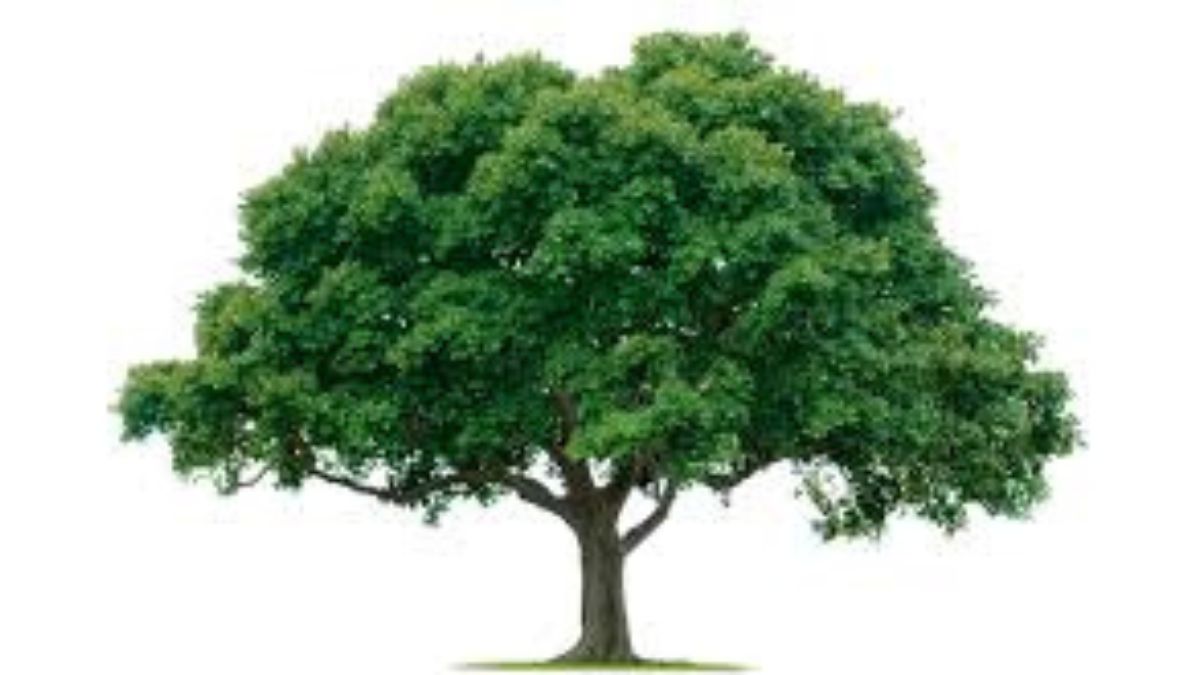Home
Smart Pruning: Shaping Healthy Trees for Long-Term Success

Why Pruning Matters for Trees Everywhere
Trees are more than a backdrop to daily life; they create cooler streets, improve air quality, and boost neighborhood character. Yet, these benefits rely on good stewardship. Regular tree trimming offers far-reaching value far beyond appearance alone. Effective pruning encourages vigorous new growth, increases resistance to pests and disease, and minimizes the risk of falling limbs—a particularly critical concern in populated areas. When pruning is neglected or done poorly, branches can weaken, split, or become overcrowded, raising the risk of property damage and safety hazards during windstorms or heavy weather.
The role of proactive pruning extends deeper than curb appeal. It helps trees develop the necessary architecture to thrive, particularly in urban spaces where green canopies often double as living infrastructure. Numerous studies, such as those summarized in National Urban and Community Forestry Advisory Council reports, demonstrate that investments in urban tree care deliver significant payouts in energy savings, stormwater capture, and even increased property values. Across landscapes large and small, regular and mindful tree maintenance strengthens natural assets that serve everyone.
Timing and Technique: The Cornerstones of Effective Pruning
Knowing when and how to prune significantly affects immediate results and long-term tree health. Late winter or early spring, during the dormant season, is the ideal time for most deciduous species. Trees experience less sap loss during this period, and pruning wounds are less likely to attract insects or pathogens. Pruning early also gives trees a head start, allowing them to recover quickly and enter the growing season with renewed energy as dormant buds awaken.
However, timing is only half the equation. According to the Arbor Day Foundation, proper technique is equally essential. Always make cuts just beyond the branch collar—the slightly swollen area where a branch meets the trunk—to support the tree’s natural healing process. Use clean, sharp tools to protect the bark and reduce tissue damage. Avoid random trimming; instead, focus on strategic, well-placed cuts that promote healthy structure and prepare the tree for strong, balanced growth in the coming seasons.
Differentiating Young and Mature Trees
Pruning isn’t a “set it and forget it” task—trees have different needs at each stage of life. For young, newly planted trees, formative pruning is essential. Thoughtful shaping in the early years helps establish a strong, balanced structure and reduces the likelihood of future problems. For example, removing co-dominant leaders and crossing branches early can prevent weak junctions and promote a resilient, visually appealing canopy. Regular formative pruning also means fewer drastic cuts—and lower risk—as the tree grows.
As trees mature, the focus shifts to promoting safety and longevity. This includes removing dead, damaged, or overextended branches, reducing excessive limb weight, and thinning dense crowns to improve light penetration and airflow. One of the most common mistakes with mature trees is over-pruning; taking off too much at once can stress the tree and make it susceptible to disease, pests, or sunscald. 25% of the canopy should be removed in a year. A gradual, steady approach to maintenance is far less stressful and more beneficial for the tree’s long-term health.
Special Considerations for Specific Tree Types
Each tree species comes with quirks and needs. Flowering species, like cherries and dogwoods, should be pruned soon after they bloom, as trimming too late in the season can sacrifice the following year’s blossoms. Fruit trees benefit from annual pruning to direct energy into producing robust yields and to keep branches accessible for future harvests. Fast-growing species such as poplars, willows, or silver maples sometimes require more frequent attention to manage excessive or weak growth.
Evergreen conifers do best with minimal intervention. Heavy-handed pruning can permanently damage their natural shape and reduce vitality. When in doubt, consult local horticultural sources or certified arborists for guidelines tailored to your specific species, as climate and regional factors can also affect ideal practices. Tree care extension offices and public arboreta often share research-based, species-specific advice for optimal timing and techniques.
Common Mistakes to Avoid
- Topping trees: Cutting off the upper crown may seem like a quick fix, but it leads to dense, unstable regrowth and can stress trees’ lifespans.
- Ignoring timing: Trimming during spring sap flow or after leaf-out can rob trees of crucial resources and reduce flowers for the next season.
- Using the wrong tools: Rusty or dull knives won’t make clean cuts, opening up wounds for bacteria or fungi to take hold.
- Over-pruning: Removing too much foliage can disrupt energy flow, causing stress, dieback, or even premature decline.
DIY Versus Professional Pruning
Homeowners can safely handle minor pruning—removing small, low branches or shaping shrubs. However, for anything involving ladders, hard-to-reach limbs, or heavy chainsaw work, it pays to call a pro. Professionals are trained to assess tree health, diagnose hidden issues (like internal decay or undetected disease), and work safely around hazards like power lines or nearby structures. Improper DIY efforts sometimes cause more harm than good, leaving trees open to infection, future storm breakage, or even structural instability.
For communities with mature canopies or high property values, investing in regular, professional inspections makes financial sense. Inspection specialists often have the equipment and knowledge to manage more complex jobs, like delicate pruning or recovering trees after storms, for optimal results and longevity.
The Role of Smart Pruning in Urban Environments
Tree pruning is a silent partner in city safety and quality of life. In dense neighborhoods, removing weak or crowded branches prevents breakage that can cause outages, injuries, or blocked walkways. Because many city trees live with compacted soils, car exhaust, and urban heat, their stress levels are higher than those of their forest-grown counterparts. Periodic tree trimming is critical for maintaining healthy, safe, and attractive canopies over busy sidewalks, streets, and communal parks.
Research conducted by the American Society of Landscape Architects shows that well-maintained urban trees provide vital shade, reduce energy use for cooling, support local wildlife, and help mitigate pollution and noise. When performed thoughtfully, pruning transforms green afterthoughts into defined features of vibrant, livable communities.
Staying Current with Best Practices
Tree care is constantly evolving. As highlighted in recent scientific studies, best practices for pruning adapt with new insights into pest resistance, climate change, and species responses to environmental stress. Homeowners, facility managers, and community leaders reap the rewards when they stay informed about the latest techniques—whether it’s changes in optimal timing, innovations in equipment, or adjustments to pruning frequency due to weather extremes.
Sharing knowledge at the community level multiplies these benefits. Thoughtful pruning routines keep schoolyards safer, shade playgrounds, protect power lines, and boost property pride. Whether you rely on certified arborists or careful, well-researched DIY efforts, innovative pruning strategies lay the groundwork for healthier, stronger, and more beautiful trees for future generations.
Home
Home Insulation Solutions for Energy-Efficient Living

Transforming your home into an energy-efficient space is essential in today’s world, offering substantial benefits in reducing utility costs and lowering your environmental footprint. At the heart of this transformation lies effective insulation, which helps maintain steady indoor temperatures year-round, lessening the strain on your heating and cooling systems. Whether you’re retrofitting an older home or building a new one, understanding and choosing the right Massachusetts insulation solutions can make a significant difference in energy savings and comfort.
Proper home insulation not only ensures comfort but also plays a pivotal role in combating climate change by minimizing residential energy consumption. By sealing your home’s envelope with the right insulation materials and methods, you create a more stable, pleasant environment that withstands seasonal extremes while also controlling long-term costs.
Advancements in insulation products and installation techniques have made it easier to customize solutions for every home and climate, allowing homeowners to maximize both performance and sustainability. By prioritizing home insulation, you take a step toward a more efficient, resilient, and eco-friendly lifestyle.
If you’re searching for experienced professionals to guide your upgrade, a reputable insulation company can provide expert advice and quality workmanship to ensure your project’s success.
Importance of Home Insulation
Home insulation is a fundamental element in creating a comfortable indoor environment year-round, as it regulates heat flow in and out of your living spaces. According to the U.S. Department of Energy, effective insulation can save homeowners up to 20% on heating and cooling costs, or up to 10% on total energy costs, by adding insulation to attics, floors, crawl spaces, and accessible basement rim joists, and by reducing unwanted air leaks all around your house.
Well-insulated homes experience fewer drafts, more consistent temperatures, and improved air quality. In addition to comfort, proper insulation reduces the workload on heating and cooling systems, extending their lifespan and lowering maintenance costs. On a larger scale, reducing your home’s energy demand helps mitigate greenhouse gas emissions—an important step toward broader environmental sustainability.
Types of Insulation Materials
With several insulation materials available, selecting the best fit for your home depends on climate, budget, and project scope. Here’s a look at the most common types:
- Fiberglass: Widely used for its affordability and performance, fiberglass batts are ideal for attics and wall cavities.
- Spray Foam: Applied as a liquid that expands into a hardened foam, spray foam excels at sealing gaps and providing high R-values, making it an excellent choice for attics, basements, and crawl spaces.
- Cellulose: Made from recycled paper products, cellulose is both eco-friendly and adept at filling irregular spaces, reducing drafts and air leakage.
- Aerogel: Known for remarkable thermal resistance in a compact form, aerogel is perfect for space-limited projects and areas where maximum insulation is needed without bulk.
Each type has unique strengths; consider consulting trusted sources and professionals to determine the right approach for your property.
Key Areas to Insulate
For optimal results, it’s important to target the most critical parts of your home during an insulation upgrade:
- Attics: Insulating the attic prevents winter heat loss and keeps out summer heat.
- Walls: Proper wall insulation reduces energy loss between the interior and exterior, enhancing overall efficiency.
- Basements and Crawl Spaces: These areas are often overlooked but essential, as they can contribute to heat loss and moisture problems.
- Windows and Doors: Sealing gaps and upgrading to energy-efficient models reduces drafts and curbs energy waste.
Innovative Insulation Techniques
The latest advancements in insulation go beyond traditional materials, integrating technology and adaptive solutions for even greater efficiency:
- Smart Insulation Systems: Incorporate IoT-enabled sensors that monitor and adjust a home’s insulation performance in real time, leading to continuous comfort and savings.
- Adaptive Insulation: These newer materials change their properties in response to heat or cold, offering dynamic protection that adapts to seasonal fluctuations and weather events.
Government Initiatives and Incentives
Many governments are investing in energy efficiency through rebates, tax credits, and direct funding for insulation improvements. In the UK, the Great British Insulation Scheme aims to upgrade the energy efficiency of homes nationwide, especially those belonging to vulnerable groups. Similarly, homeowners in the United States can take advantage of federal and state-level incentives to offset the cost of materials and installation—for example, the Energy Efficient Home Improvement Credit.
Steps to Enhance Home Insulation
- Conduct an Energy Audit: An energy audit identifies trouble spots for heat loss and provides a roadmap for upgrades.
- Choose Appropriate Materials: Select insulation products that match your climate, needs, and budget for each area of your home.
- Seal Gaps and Cracks: Use caulk and weatherstripping to eliminate sash leaks around windows and doors, as well as at pipe and wire penetrations.
- Upgrade Windows and Doors: Consider double-pane windows and insulated exterior doors for improved performance.
- Consult Professionals: Partnering with insulation experts ensures correct installation and maximized benefits for years to come.
Conclusion
Proper home insulation is one of the most effective ways to boost energy efficiency, trim costs, and align residential life with environmental responsibility. Leveraging modern materials, advanced techniques, and available incentives, every homeowner can create a more comfortable, sustainable living space. Start with a thorough energy audit and invest in upgrading critical areas—your home, wallet, and the planet will all benefit from the improved efficiency and resilience.
Home
Creative Storage Tips for Small Spaces

Maximizing space in small living areas can often feel like a daunting challenge. Limited square footage means every inch counts, making organization and clever storage solutions essential. From compact apartments to cozy studios, finding ways to store belongings efficiently without sacrificing style is key to creating a functional and comfortable home. Creative approaches, such as using vertical space, multi-purpose furniture, or hidden compartments, can transform even the tiniest spaces into well-organized, clutter-free environments.
In addition to optimizing in-home storage, some residents turn to external options to manage overflow items safely and conveniently. Utilizing services like secured storage Lodi can provide an extra layer of flexibility, allowing individuals to store seasonal items, rarely used belongings, or bulky equipment without crowding their living space. By combining smart in-home strategies with accessible external solutions, small spaces can feel larger, more organized, and better suited to everyday life, proving that limited square footage doesn’t have to limit functionality.
Embrace Vertical Storage
When it comes to maximizing space, vertical storage is a game-changer. Installing floating shelves or wall-mounted racks utilizes wall space above desks, countertops, or in hallways. Not only does this approach provide extra storage, but it can also serve as an attractive design feature when styled thoughtfully with decor or books. In small kitchens, for example, vertical spice racks or hanging utensil bars keep counters free and make cooking essentials easy to reach.
Opt for Multifunctional Furniture
Choosing pieces that do double duty is crucial in compact spaces. Consider investing in sofas with storage chaises, ottomans with lift-up lids, and beds with integrated drawers. Even dining tables with built-in shelving or convertible desks can significantly upgrade your storage game. These furnishings help maintain a clutter-free atmosphere by discreetly providing places to store daily essentials, from extra linens to tech devices, without sacrificing valuable square footage.
Utilize Over-the-Door Organizers
The often-overlooked space behind doors can serve as excellent storage territory. Over-the-door racks and organizers are perfect for pantries, bathrooms, bedrooms, and closets. Hang shoes, scarves, or cleaning supplies in one spot. Use them in bathrooms to store hair tools and personal care items. This method keeps everything accessible while preserving floors and shelves for other uses.
Incorporate Hidden Storage Solutions
Nothing beats the feeling of organizing by hiding away daily clutter in concealed spots. Many coffee tables and benches now come with lift-up tops or cubby holes, making it simple to store remotes, books, or games. In the kitchen, toe-kick drawers installed beneath lower cabinets are ideal for storing baking sheets and trivets, which often occupy valuable shelf space. Staircases can also include pull-out drawers for shoes, pet supplies, or seasonal items, optimizing every step.
Another effective approach is to store items outside the main living areas. Self-storage units, especially those with robust security, are ideal for storing off-season clothing, sports equipment, or sentimental belongings, helping you maintain a clutter-free and open living space.
Maximize Under-Bed Space
The area beneath your bed offers a significant storage opportunity that is often overlooked. Utilize flat bins or rolling drawers to store shoes, blankets, or off-season apparel. For dust-prone environments, use lidded boxes or vacuum-sealed bags to prevent dust from accumulating. Be sure to label bins for easy access when you need to retrieve specific items. This space is especially helpful in bedrooms lacking a closet or dresser.
Use Light Colors and Mirrors
Enhancing a small space isn’t just about storage—it’s also about perception. Lighter wall colors, decor, and furnishings reflect more light, expanding the room’s visual boundaries. Adding mirrors can amplify this effect, making interiors look brighter and more spacious. Placing mirrors opposite windows or in dark alcoves bounces natural sunlight, creating the illusion of extra square footage.
Implement Overhead Storage
Don’t overlook ceiling space—install racks or suspended shelves for items you don’t use daily, such as holiday decorations or rarely used kitchen equipment. Ceiling-mounted pot racks free up coveted cabinet and counter space in tiny kitchens, while garages and laundry rooms can benefit from elevated shelving for seasonal storage. Remember, accessibility and safety are key, so use sturdy mounting systems and keep a step stool handy for reaching higher items.
Customize Cabinet Interiors
Maximize the storage capacity of your cabinets by incorporating smart organization features inside them. Install pull-out drawers or sliding trays to bring items at the back into easy reach. Add shelf risers or tiered stands to double usable space. Consider door-mounted racks for cleaning products or spices. Lazy Susans are another efficient addition, especially in deep cabinets or corner units, ensuring no inch goes to waste.
Bringing It All Together
Maximizing small spaces requires a balance of creativity, strategy, and practicality. By combining vertical storage, multifunctional furniture, hidden compartments, and innovative cabinet organization with thoughtful design elements like light colors and mirrors, every inch of a home can be optimized for efficiency. External solutions add even more flexibility, allowing residents to maintain clutter-free living areas without sacrificing accessibility. With careful planning and a mix of in-home and external storage strategies, even the most compact spaces can feel open, organized, and fully functional.
Home
Energy-Efficient HVAC Innovations for Modern Homes

Introduction to Energy-Efficient HVAC Systems
As global attention shifts toward sustainable living solutions, energy-efficient HVAC systems have gained significant traction in modern home design. These systems represent a crucial technological leap to reduce energy consumption while providing the ultimate comfort experience. In regions such as Burlington, MA, homeowners are increasingly aware of such systems’ advantages. Opting for tailored air cooling services Burlington, MA, not only enhances comfort but also contributes to substantial long-term cost savings and a reduced carbon footprint.
Energy-efficient HVAC systems differ from traditional models in their technical architecture. They are equipped with advanced components designed to minimize energy usage, thus promoting an eco-friendly lifestyle. This efficiency does not come at the expense of comfort or performance. Instead, these systems are engineered to operate seamlessly, ensuring consistent indoor air quality and optimal temperature control, making them a wise choice for the environmentally conscious homeowner.
Benefits of Upgrading to Energy-Efficient Systems
Upgrading to energy-efficient HVAC systems offers numerous advantages beyond energy savings. The dramatic reduction in monthly utility bills is at the forefront, achieved through wise energy consumption. The U.S. Department of Energy highlights that energy-efficient upgrades can slash energy expenses by up to 50%, a significant reduction that alleviates financial burdens over time. However, the benefits transcend monetary savings.
Energy-efficient HVAC systems enhance indoor air quality by utilizing advanced filtration methods that eliminate pollutants and allergens, thereby improving living spaces’ overall health and comfort. This shift to improved air quality is especially advantageous for those with respiratory issues, offering a healthier, more pleasant living space. Moreover, these systems enhance asset worth, which is frequently regarded as a desirable attribute for prospective purchasers, thereby raising property value.
Key Innovations in HVAC Technology
The HVAC industry is at the forefront of technological advancement, with several groundbreaking innovations dramatically improving energy efficiency. One notable advancement is the integration of variable-speed motors. Unlike traditional models that operate at a single speed, these motors adjust their operational pace to match real-time cooling or heating demand. This intelligent adjustment reduces unnecessary energy use by operating at lower speeds during less demanding conditions, resulting in significant energy savings.
Zoning systems further enhance energy efficiency by allowing homeowners to regulate temperatures independently in different areas of their homes. This focused strategy guarantees that energy is not squandered in empty or rarely utilized areas, enhancing resource efficiency.
The absolute brilliance of these innovations lies in their ability to provide tailored comfort levels throughout the home, something that older systems cannot match.
Smart Thermostats: The Brain of Modern Systems
The advent of smart thermostats has revolutionized home climate control, serving as the intelligent core of modern HVAC systems. These devices connect seamlessly to Wi-Fi networks and utilize data-driven insights from occupancy patterns, weather forecasts, and user habits to fine-tune temperature settings automatically. This level of automation ensures that homes remain comfortable while avoiding inefficient energy use.
For homeowners who crave convenience and control, smart thermostats offer the luxury of managing heating and cooling remotely via smartphones or tablets. This capability ensures comfort when returning home and allows users to enact energy-saving adjustments dynamically, even from afar. The combination of convenience, energy efficiency, and precision makes smart thermostats indispensable to contemporary HVAC systems.
Eco-Friendly Refrigerants: A Green Perspective
The environmental repercussions of traditional refrigerants have pushed the industry toward more sustainable alternatives. Traditional refrigerants have a considerable potential for global warming and cause environmental damage when discharged into the atmosphere.
In response, newer, eco-friendly options have been developed and specifically formulated to mitigate these detrimental effects. Stringent global agreements and regulatory frameworks, such as the Kigali Amendment, drive the shift to these alternatives.
These eco-friendly refrigerants comply with environmental regulations and maintain high performance standards. As a result, users can operate their HVAC systems with peace of mind, knowing they’re minimizing ecological impact without compromising efficiency or comfort. This strategic pivot to green refrigerants is a testament to the industry’s commitment to sustainable practices.
The Role of Solar-Powered HVAC Units
The incorporation of solar energy into HVAC systems signifies a significant change in the use of renewable energy. Solar-powered HVAC systems capture the sun’s plentiful energy, providing an eco-friendly and economical option compared to traditional electric power. This advancement decreases dependence on non-renewable energy sources while also significantly lowering operating expenses, offering a combined advantage of ecological preservation and cost reduction.
As more homeowners adopt solar HVAC units, the cumulative environmental benefits become substantial. Solar integration is thus a pivotal step in the broader adoption of green technologies.
Common Misconceptions About Energy Efficiency
Despite their growing popularity, energy-efficient HVAC systems are still surrounded by several misconceptions. A prevalent myth is the perceived exorbitant initial investment required for these systems. While the upfront cost may be higher than traditional options, the consistent savings on energy bills often offset this initial outlay over time, making the investment economically viable in the long run.
Some also mistakenly believe that energy-efficient systems sacrifice performance for efficiency. However, advancements in technology have dispelled this notion. Modern energy-efficient systems are engineered to deliver superior performance while utilizing less energy. These misconceptions often stem from outdated perceptions and can be addressed through education and awareness of these systems’ benefits.
Steps to Transition to an Energy-Efficient HVAC System
Transitioning to an energy-efficient HVAC system is a methodical process that requires several key considerations. The process starts with an energy evaluation to pinpoint areas where enhancements can result in significant savings. This phase establishes a foundational comprehension, guaranteeing that investments are aimed precisely and enhancing potential advantages.
Once the assessment is complete, the next step involves researching and selecting a suitable energy-efficient model that meets the home’s specific requirements regarding size, capacity, and technological features. Collaborating with professionals for guidance during this selection process can provide insights into the best options. The final step is ensuring proper installation and regular maintenance of the system. Professional installation guarantees the system operates at its full potential, while regular maintenance ensures longevity and continued efficiency.
For homeowners, embracing energy-efficient HVAC systems represents a commitment to sustainability. They also promise enhanced comfort, reduced environmental impact, and considerable long-term savings, making the transition a sound investment in the future of home living.
-

 GENERAL12 months ago
GENERAL12 months agoFrom Fan Art to Original Works: The Diversity of doujindesu Creations
-

 Entertainment8 months ago
Entertainment8 months agoEnchantment & Excitement: Crafting Unforgettable Event Experiences
-

 GENERAL9 months ago
GENERAL9 months agoEngland Business Visa Requirements for American and International Citizens in 2025: A Guide for Entrepreneurs
-

 GENERAL8 months ago
GENERAL8 months agoCrossword Conundrum: The Significance of vault opener nyt crossword
-

 GENERAL10 months ago
GENERAL10 months agoLatest Trends in Men’s and Women’s Jackets for the Upcoming Season
-

 GENERAL8 months ago
GENERAL8 months agoExploring the World of nhentai.nef: A Comprehensive Guide for New Users
-

 Health12 months ago
Health12 months agoDiscovering gel ooru: The Ultimate Guide to This Unique Traditional Craft
-

 GENERAL1 year ago
GENERAL1 year agoWhy raterpoint is Revolutionizing Customer Feedback
